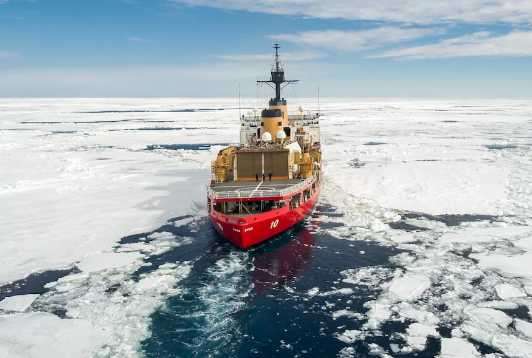Family and friends were on hand to greet the crew of the Coast Guard Cutter "Polar Star" as it pulled into Pier 36 on Friday upon its return from a 108-day deployment to Antarctica.
The Polar Star has been gone from Seattle since December 3rd, 2013, when it left to take part in Operation Deep Freeze, a re-supply mission to McMurdo Station in the Antarctic.
This mission was its second sailing in years as the 399-foot polar class icebreaker had been the subject of a three-year, $90-million overhaul at the Vigor Shipyard in Seattle.
Prior to this mission, the Polar Star underwent two weeks of sea trials in April, then departed to the Beaufort Sea to begin training and troubleshooting of its engineering plant and propulsion systems in Arctic Ice trials later in the summer.
After leaving Seattle on its latest mission, the Polar Star made a stop in Honolulu before continuing on the Sydney, Australia.
The ice-breaker left Sydney in January to assist in the rescue effort of two ships, the Russian vessel Akademik Shokalsiky and the Chinese vessel Xue Long. These vessels were beset (or stuck) in 15 feet of thick sea ice near Commonwealth Bay, Antarctica. While Polar Star was en route, the shifting ice conditions allowed the two ships to break free from the ice prior to the Coast Guard icebreaker’s arrival.
In Antarctica, the Polar Star broke a navigable shipping lane through 12 miles of ice in McMurdo Sound, encountering ice up to 10 feet in thickness. The shipping channel was used by the tanker ship Maersk Peary to deliver approximately three and a half million gallons of fuel to McMurdo residents, allowing the Station to remain operational during the freezing winter months. The channel was also used by the cargo ship Maersk Illinois to deliver more than 500 containers of supplies to operate McMurdo and South Pole stations for the next 12 months.
The crew of the Polar Star also delivered and deployed nearly one mile of fuel hose to Marble Point, an air station 20 miles west of McMurdo. The new hose replaced a worn out one, and allows the air station to be refueled for the next 15 years.








